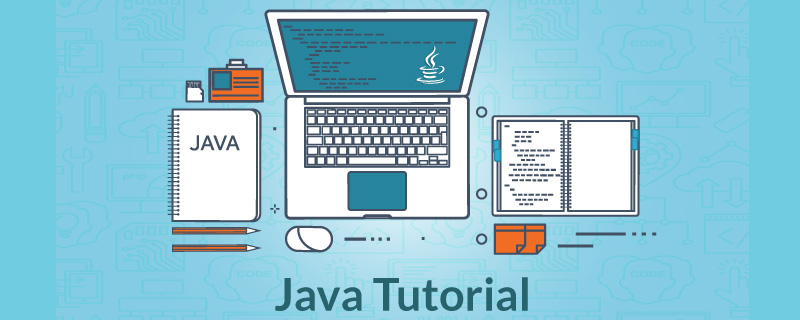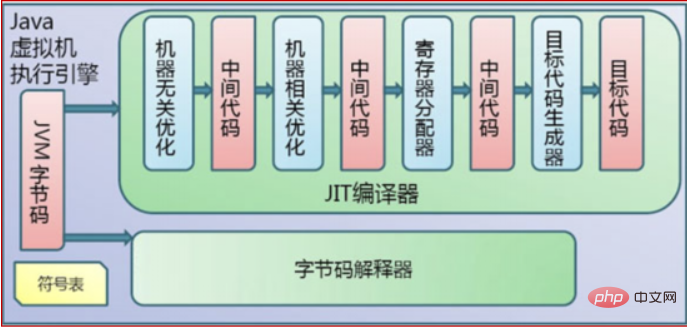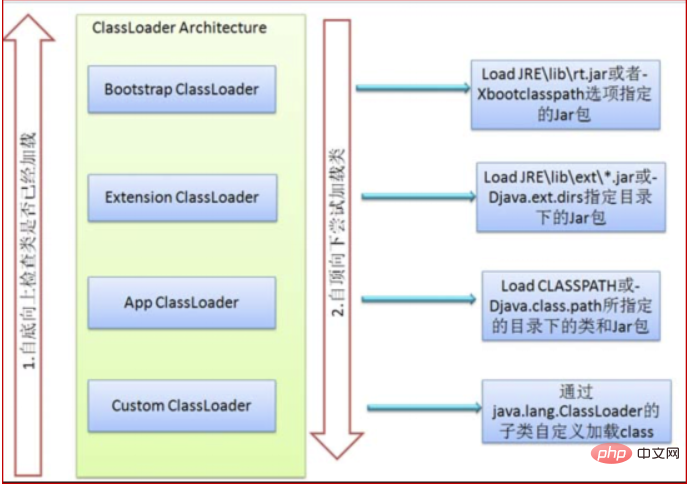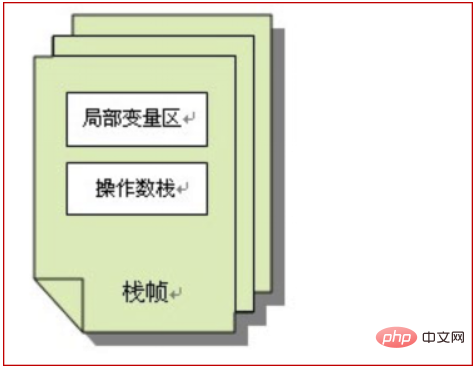java code compilation sequence: first the source code enters the lexical analyzer, and then the token stream enters the syntax analyzer; then the abstract syntax tree is processed and then the semantic analyzer is performed; then the abstract syntax tree is annotated and generated using bytecode processor; finally generates jvm bytecode.

Java code compilation sequence:
Java code compilation is completed by the Java source code compiler. The flow chart is as follows:

The execution of Java bytecode is completed by the JVM execution engine. The flow chart is as follows:

The entire process of Java code compilation and execution includes the following three important mechanisms: 1) Java source code compilation mechanism; 2) Class loading mechanism; 3) Class execution mechanism
Among them, Java source code compilation consists of the following three processes: 1) analysis and input to the symbol table; 2) annotation processing; 3) semantic analysis and generation of class files
The flow chart is as follows:

The finally generated class file consists of the following parts:
1) Structural information. Includes class file format version number and information on the number and size of each part.
2) Metadata. Corresponds to information about declarations and constants in Java source code. Contains declaration information of classes, inherited superclasses, implemented interfaces, domain and method declaration information, and constant pools.
3) Method information. Corresponds to the information corresponding to statements and expressions in Java source code. Contains bytecode, exception handler table, evaluation stack and local variable area size, evaluation stack type record, and debugging symbol information.
Class loading mechanism
JVM class loading is completed through ClassLoader and its subclasses. The hierarchical relationship and loading order of the classes are as shown in the figure below:

1) BootStrap ClassLoader
is responsible for loading all classes in the jre/lib/rt.jar package in $JAVA_HOME. It is implemented by C and is not a ClassLoader subclass
2) Extension ClassLoader
is responsible for loading some jar packages for extension functions in the Java platform, including jars in the directory specified by jre/lib/*.jar or -Djava.ext.dirs in $JAVA_HOME Bag.
3) App ClassLoader
is responsible for recording the jar package specified in the classpath and the class in the directory
4) Custom ClassLoader
belongs to the application according to its own needs Customized ClassLoaders, such as tomcat and jboss, will implement ClassLoader according to j2ee specifications.
During the loading process, it will first check whether the class has been loaded. The checking order is from bottom to top, from Custom ClassLoader to BootStrap. ClassLoader checks layer by layer. As long as a certain classloader has been loaded, the class is considered loaded, ensuring that this class is only loaded once. The loading order is from top to bottom.
Class execution mechanism
JVM is based on the stack architecture to execute class bytecode. After a thread is created, a program counter (PC) and a stack (Stack) will be generated. The program counter stores the next instruction to be executed. Each stack frame is stored in the stack. Each stack frame corresponds to each call of each method. The stack frame is composed of two parts: the local variable area and the operand stack. The local variable area is used to store local variables in the method. and parameters, the operand stack is used to store intermediate results generated during method execution. The structure of the stack is as follows:

Related free learning recommendations: java basic tutorial
The above is the detailed content of What is the compilation order of java code. For more information, please follow other related articles on the PHP Chinese website!

Hot AI Tools

Undress AI Tool
Undress images for free

Undresser.AI Undress
AI-powered app for creating realistic nude photos

AI Clothes Remover
Online AI tool for removing clothes from photos.

Clothoff.io
AI clothes remover

Video Face Swap
Swap faces in any video effortlessly with our completely free AI face swap tool!

Hot Article

Hot Tools

Notepad++7.3.1
Easy-to-use and free code editor

SublimeText3 Chinese version
Chinese version, very easy to use

Zend Studio 13.0.1
Powerful PHP integrated development environment

Dreamweaver CS6
Visual web development tools

SublimeText3 Mac version
God-level code editing software (SublimeText3)
 How to handle transactions in Java with JDBC?
Aug 02, 2025 pm 12:29 PM
How to handle transactions in Java with JDBC?
Aug 02, 2025 pm 12:29 PM
To correctly handle JDBC transactions, you must first turn off the automatic commit mode, then perform multiple operations, and finally commit or rollback according to the results; 1. Call conn.setAutoCommit(false) to start the transaction; 2. Execute multiple SQL operations, such as INSERT and UPDATE; 3. Call conn.commit() if all operations are successful, and call conn.rollback() if an exception occurs to ensure data consistency; at the same time, try-with-resources should be used to manage resources, properly handle exceptions and close connections to avoid connection leakage; in addition, it is recommended to use connection pools and set save points to achieve partial rollback, and keep transactions as short as possible to improve performance.
 Understanding the Java Virtual Machine (JVM) Internals
Aug 01, 2025 am 06:31 AM
Understanding the Java Virtual Machine (JVM) Internals
Aug 01, 2025 am 06:31 AM
TheJVMenablesJava’s"writeonce,runanywhere"capabilitybyexecutingbytecodethroughfourmaincomponents:1.TheClassLoaderSubsystemloads,links,andinitializes.classfilesusingbootstrap,extension,andapplicationclassloaders,ensuringsecureandlazyclassloa
 How to work with Calendar in Java?
Aug 02, 2025 am 02:38 AM
How to work with Calendar in Java?
Aug 02, 2025 am 02:38 AM
Use classes in the java.time package to replace the old Date and Calendar classes; 2. Get the current date and time through LocalDate, LocalDateTime and LocalTime; 3. Create a specific date and time using the of() method; 4. Use the plus/minus method to immutably increase and decrease the time; 5. Use ZonedDateTime and ZoneId to process the time zone; 6. Format and parse date strings through DateTimeFormatter; 7. Use Instant to be compatible with the old date types when necessary; date processing in modern Java should give priority to using java.timeAPI, which provides clear, immutable and linear
 Comparing Java Frameworks: Spring Boot vs Quarkus vs Micronaut
Aug 04, 2025 pm 12:48 PM
Comparing Java Frameworks: Spring Boot vs Quarkus vs Micronaut
Aug 04, 2025 pm 12:48 PM
Pre-formanceTartuptimeMoryusage, Quarkusandmicronautleadduetocompile-Timeprocessingandgraalvsupport, Withquarkusoftenperforminglightbetterine ServerLess scenarios.2.Thyvelopecosyste,
 How does garbage collection work in Java?
Aug 02, 2025 pm 01:55 PM
How does garbage collection work in Java?
Aug 02, 2025 pm 01:55 PM
Java's garbage collection (GC) is a mechanism that automatically manages memory, which reduces the risk of memory leakage by reclaiming unreachable objects. 1.GC judges the accessibility of the object from the root object (such as stack variables, active threads, static fields, etc.), and unreachable objects are marked as garbage. 2. Based on the mark-clearing algorithm, mark all reachable objects and clear unmarked objects. 3. Adopt a generational collection strategy: the new generation (Eden, S0, S1) frequently executes MinorGC; the elderly performs less but takes longer to perform MajorGC; Metaspace stores class metadata. 4. JVM provides a variety of GC devices: SerialGC is suitable for small applications; ParallelGC improves throughput; CMS reduces
 Understanding Network Ports and Firewalls
Aug 01, 2025 am 06:40 AM
Understanding Network Ports and Firewalls
Aug 01, 2025 am 06:40 AM
Networkportsandfirewallsworktogethertoenablecommunicationwhileensuringsecurity.1.Networkportsarevirtualendpointsnumbered0–65535,withwell-knownportslike80(HTTP),443(HTTPS),22(SSH),and25(SMTP)identifyingspecificservices.2.PortsoperateoverTCP(reliable,c
 go by example defer statement explained
Aug 02, 2025 am 06:26 AM
go by example defer statement explained
Aug 02, 2025 am 06:26 AM
defer is used to perform specified operations before the function returns, such as cleaning resources; parameters are evaluated immediately when defer, and the functions are executed in the order of last-in-first-out (LIFO); 1. Multiple defers are executed in reverse order of declarations; 2. Commonly used for secure cleaning such as file closing; 3. The named return value can be modified; 4. It will be executed even if panic occurs, suitable for recovery; 5. Avoid abuse of defer in loops to prevent resource leakage; correct use can improve code security and readability.
 Java Concurrency Utilities: ExecutorService and Fork/Join
Aug 03, 2025 am 01:54 AM
Java Concurrency Utilities: ExecutorService and Fork/Join
Aug 03, 2025 am 01:54 AM
ExecutorService is suitable for asynchronous execution of independent tasks, such as I/O operations or timing tasks, using thread pool to manage concurrency, submit Runnable or Callable tasks through submit, and obtain results with Future. Pay attention to the risk of unbounded queues and explicitly close the thread pool; 2. The Fork/Join framework is designed for split-and-governance CPU-intensive tasks, based on partitioning and controversy methods and work-stealing algorithms, and realizes recursive splitting of tasks through RecursiveTask or RecursiveAction, which is scheduled and executed by ForkJoinPool. It is suitable for large array summation and sorting scenarios. The split threshold should be set reasonably to avoid overhead; 3. Selection basis: Independent






